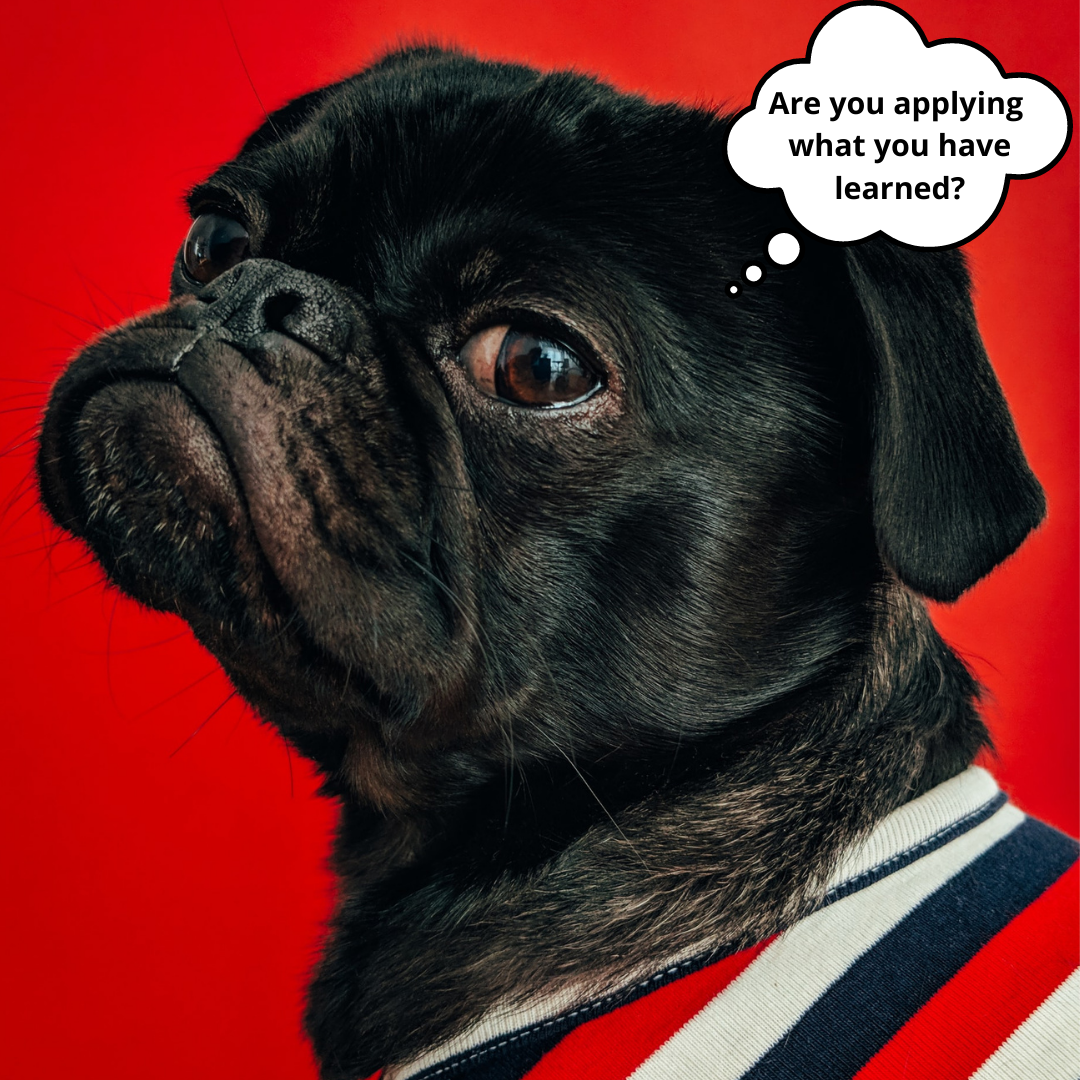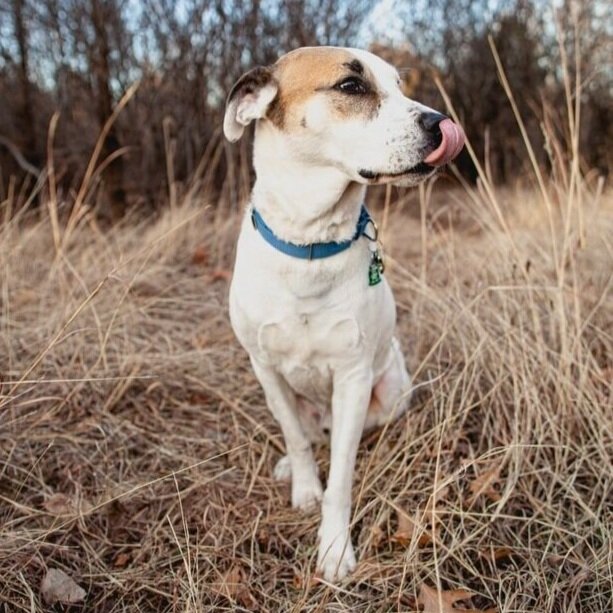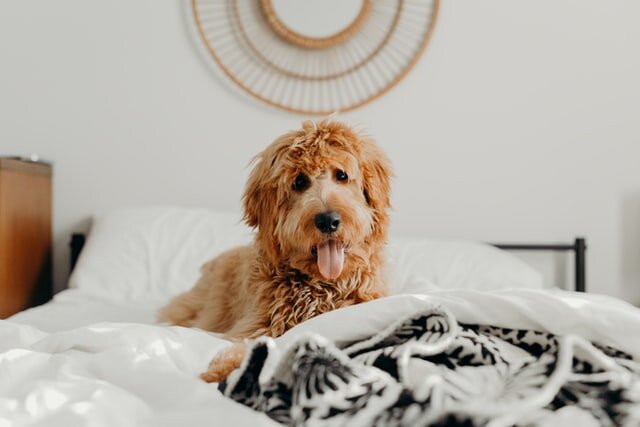How does a high rate of reinforcement look like and why we use it?
Photo by Marek Szturc on Unsplash
Reinforcement makes the behaviour more likely to occur again. The high rate of reinforcement is the number of reinforcers given in a specific period of time. In dog training, it can look like just feeding the dog, yet, it is a critical tool for training success*.
If you are teaching a very exuberant puppy to stay in one place you might use a high rate of reinforcement. He will then not move from the spot as there is no need, the food is constantly coming. It's a very good tool and starting point for teaching stay. It can be an essential tool, especially for some dogs! If the dog is very energetic, demanding from him to stop and wait will cause him and yourself a lot of frustration. Starting from a high rate of reinforcement gives him and you a point of success. It makes the training session filled with a lot of successes and creates a positive association with the session. It’s a great way of teaching calm behaviours. From there, you can gradually increase the time between the food coming. I wouldn’t advise building duration in a linear way but instead throwing occasional reinforcers for a short duration. It helps the dog stay in the game for longer.
Image by Lenka Novotná from Pixabay
The high rate of reinforcement keeps the dog in the game and makes the whole process fun and full of successes. If your dog makes a lot of mistakes when you are training him, it can be a great indicator that a high rate of reinforcement can be very useful in this scenario. Instead of making his mistakes “wrong”, we provide a lot of success and create a desire for more sessions. Don't be afraid to start small or to go back a few steps. Your dog learns all the time and by repeating mistakes he can also get good at them! The high rate of reinforcement is a brilliant way of avoiding all mistakes in the first place.
Challenge!
Photo by ThisisEngineering RAEng on Unsplash
Can you see how this can be useful in changing your own behaviour? Will that not be much more fun to learn a new thing if you get a lot of reinforcement for doing the work? You are still learning but you also enjoy the process much more! I don't recommend using treats as your reinforcement though! Most of us already use comfort food, we go to our favourite treats when we feel stressed and let's leave it there. I would suggest looking for something else. The very first recommendation I can have is simply the fact of being successful. You can see that in certain apps. For example, while learning a language you can use an app like Duolingo and start from many points of success in the process of acquiring the language. The app will show you the progress you make and immediately give you feedback when you’ve been correct. You get many opportunities to be successful and therefore get a lot of reinforcement.
Another thing to consider is to set up a small goal for yourself, a goal that is achievable and yet is a little bit of a challenge - for example, if you haven't been exercising at all for the past 2 months, the small step can be 4 min of workout - it's already a challenge if you haven't been working out for 2 months! Don't be afraid to start small - it will increase the amount of reinforcement you get and therefore not only will keep you in the game for longer but also make the process of learning (creating a habit) much more enjoyable!
Image by Gerd Altmann from Pixabay
Something else you can use for yourself is a tick mark on a table or a whiteboard where you track all of your achievements. There are apps that you can use on your phone to track your progress. You can also get extrinsic rewards like 5 min of playing your favourite video game or reading a favourite book. Sometimes it's better to use tokens - you will play the game after you collected a certain amount of tokens (for example collecting buttons in a jar), otherwise, you might end up playing the game for the rest of the day. You can also hire a coach or ask a friend to offer you a good word. It truly depends on you and your learning history what will work best for you as an individual. Test it for yourself and have fun with it! There is no “good” or “wrong” answer, it's only what works and what doesn't at this moment of time (what works now can change in the future!).
Last word about reinforcement
Not every dog is highly motivated by food. It's not given. We can create food motivation (all dogs eat so it's doable to teach them to enjoy food) or we can change what we are using as reinforcement for that dog. Food isn't better or worse. It just is. Many people prefer it as it is very tangible but it's not the only available option! Testing preferences is good for dogs too. Some dogs work brilliantly for affection from their human but if the human doesn't know what kind of affection his dog likes, he might get the opposite result. We sometimes feel that just praising the dog will be enough reinforcement and we can even have a very high reinforcement of that. Yet, praise in itself can't be called a reinforcement, if it never was tested with an individual in front of you. It goes both for you and for your dog. If after hearing praise your dog doesn't repeat the behaviour that was praised - it’s likely that he doesn't find praise reinforcing. Similarly, your friend might start praising you and you might find it incredibly annoying and you just want him to stop immediately! Reinforcement by definition increases the likelihood of the behaviour to happen in the future. If you don't see this effect, what you're using simply is not a reinforcer. Test something else next time and trust the process!
Image by Cindy Parks from Pixabay
*Reference for the terms here https://www.clickertraining.com/glossary/17#letterr




















Many times we don’t even bother trying to learn a new skill. We convince ourselves that it’s not for us. When what we could do is to find the first successive approximation and start learning through a fun and successful process.